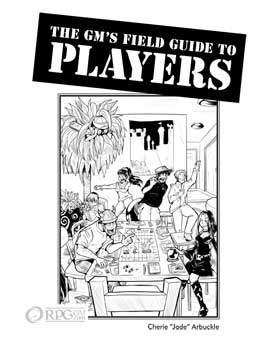The six “W’s”. You know — the questions your teacher talked about over and over. The ones that every book on how to write covers: who, what, when, where, why, how. These questions are good for more than creative writing and literature analysis; they form a framework you can use to build game adventures.
 We’ll take each question in turn, but you don’t have to use them in the order given here. I tend to jump back and forth between questions as I develop scenarios and adventures. Have you ever used any of these to create adventures?
We’ll take each question in turn, but you don’t have to use them in the order given here. I tend to jump back and forth between questions as I develop scenarios and adventures. Have you ever used any of these to create adventures?
Who
This covers all the “people” (including familiars, animal companions, talking ficus trees…) involved in the adventure:
- The PCs: if possible, make a note of something about each of the PCs that could be relevant to the planned mission.
- Major NPCs: this includes the main “villain” of the adventure, as well as henchmen and hirelings of the party, familiars, animal companions, and any NPC party members, as well as the person who gives the mission to the party (if any).
- The players: Think about each of your players. What aspect of roleplaying suits each player? What aspect(s) does the group as a whole seem to prefer? This will help you make sure you have something for everyone.
- Who wants the mission to succeed? Which NPCs are pulling for the PCs and what are their motives? Why do they want the PCs to succeed?
- Who wants the mission to fail? Which NPCs will benefit from the mission’s failure? What will they gain from that failure?
What
This covers the details of the mission at hand:
- The mission: set clear, tangible, and reachable goals for your mission, goals that will allow the PCs to know whether they’ve succeeded or failed without you having to tell them.
- What maps do you need to have or create?
- What props do you want to use?
- What special items (if any) do the PCs need to complete the mission?
When
This covers the time period the game will take place in:
- Real-world date: I often find it useful to note the real-world date I start a new adventure on.
- In-game date: what is the in-game starting date?
- What season will the adventure take place in? Climate and weather can add interesting obstacles to the adventure.
- Time frame: does the mission have a deadline?
Where
This covers the details of where the adventure will take place:
- Starting location: where does the adventure start?
- Ending location: where does the adventure end?
- What other locations are important in this adventure?
- What customs, languages, and laws of these locations might the PCs need to know about?
Why
Often, this questions is overlooked, but it can be the most critical. It covers the reasons for the adventure in the first place, as well as the character’s motivations for undertaking it:
- Necessity: why is this mission required?
- Why the PCs? Why do the characters need to be ones to do it? If possible, list some personal reasons each of the characters would undertake this mission.
- What are the rewards for completing the mission successfully, both for the game world and for the PCs, collectively and separately?
- What are the consequences of failure, both for the game world and for the PCs, collectively and separately?
How
This question covers the methods the PCs can use to obtain the mission goals.
- Be flexible: the PCs will probably complete the mission in a way you could never even thought of.
- Be prepared: even so, you should have a least a couple of ideas how the PCs might successfully complete it.
- This will allow you to throw them some hints if they get really stuck or start going off on an unrelated tangent.
Creating adventures can be daunting. The above questions should help get your imagination running. Of course, you may not need to answer all of the above questions for every adventure you create. And you should certainly feel free to change or add more questions of your own. The whole idea here is to give you a solid framework to start building an adventure; as usual, fold, spindle, twist, and mutilate to fit your needs 😉 .
If you use this method to help create an adventure, please share you’re experiences with us. If you’ve got other methods for creating adventures, I’d love to hear about them. I’m always on the lookout, myself, for other ways to create adventures.






Pingback: [RPG-Blog-O-Quest] Juni 2018: „Die 6Ws“ | Timber's Diaries
Pingback: Your Teacher Was Right - How to Create Adventures with The 6 W's — RPT#469 - Roleplaying Tips